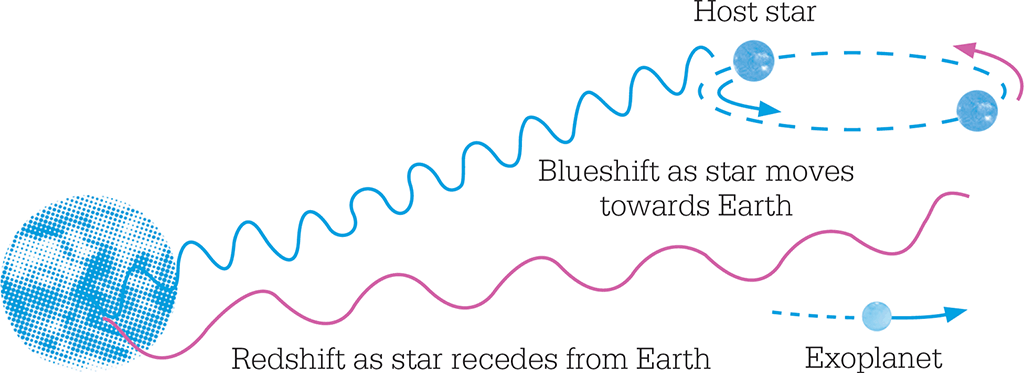
IN CONTEXT
Astronomy
1960s Astronomers hope to detect new planets through measurement of “wobbles” in the paths of stars, but such movements remain beyond the range of even the strongest telescopes today.
1992 Polish astronomer Aleksander Wolszczan finds the first confirmed extrasolar planets in orbit around a pulsar (a burnt-out stellar core).
2009–2013 NASA’s Kepler satellite discovers more than 3,000 candidate exoplanets by looking for minute drops in the brightness of stars as planets pass in front of them. Based on Kepler data, astronomers predict there could be as many as 11 billion Earth-like worlds orbiting Sun-like stars in the Milky Way galaxy.
Astronomers have long pondered the possibility of planets orbiting stars other than our Sun, but technology has, until recently, limited our ability to detect them. First to be found were planets that orbited pulsars – rapidly spinning neutron stars whose radio signals vary slightly as their planets pull them this way and that. Then, in 1995, Swiss astronomers Michel Mayor and Didier Queloz discovered 51 Pegasi b – a Jupiter-sized planet orbiting a Sun-like star about 51 light years from Earth. Since then, more than 1,000 other extrasolar planets, or “exoplanets”, have been confirmed.
Planet hunter
Astronomer Geoffrey Marcy at the University of California, Berkeley, along with his team, currently holds the record for the most planets found by a human observer, including 70 out of the first 100.
Such distant planets are too faint to be seen directly, but can be revealed indirectly. The effect of a planet’s gravity on its host star produces variations in the star’s radial velocity – the speed at which it moves towards or away from Earth – which can be measured from changes in its light frequency. Whether any exoplanets support life remains to be seen.

The radial velocity method relies on detecting slight Doppler shifts in a star’s light frequency as it is pulled back and forth in relation to Earth by the gravity of an orbiting planet.
See also: Nicolaus Copernicus • William Herschel • Christian Doppler • Edwin Hubble